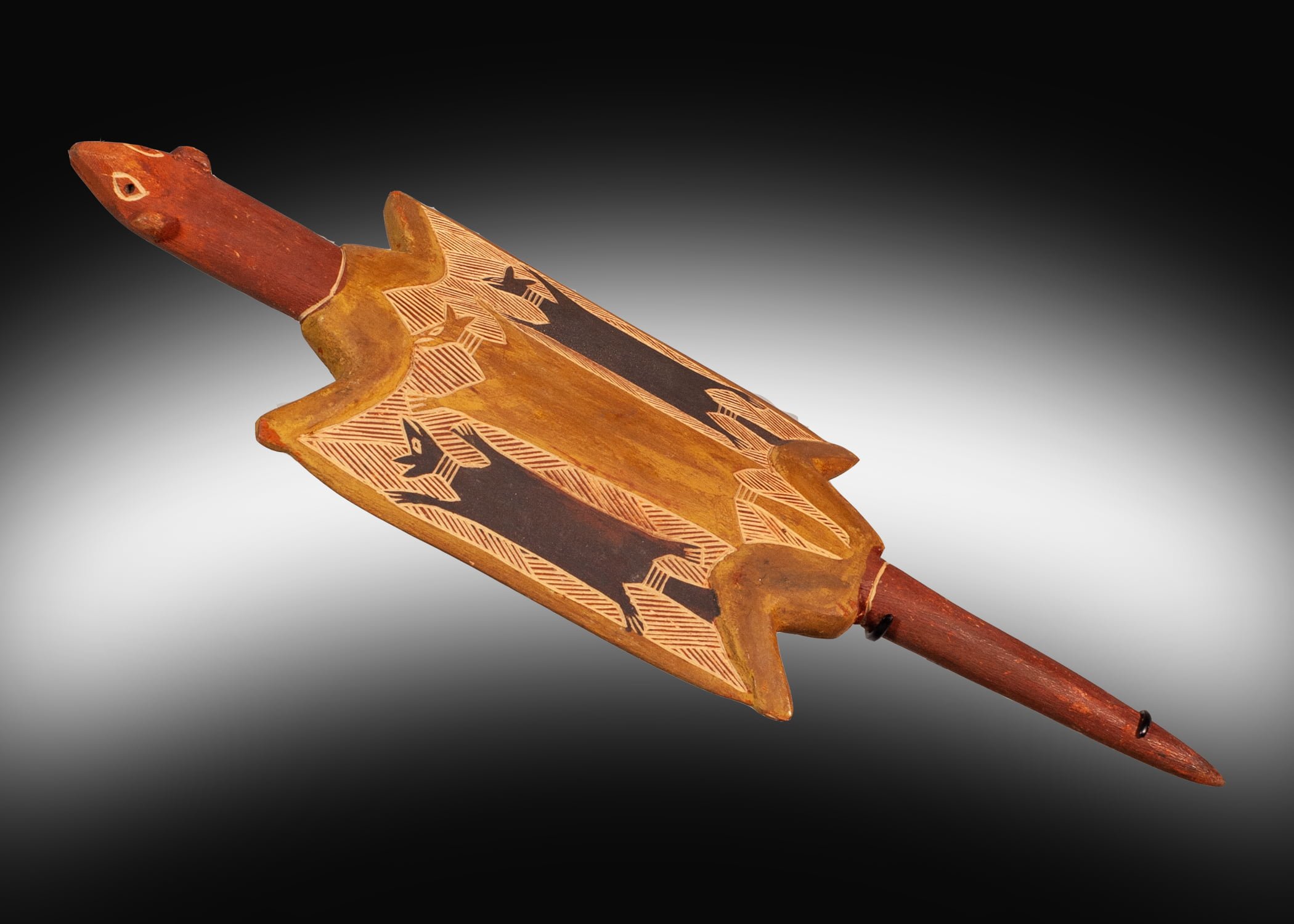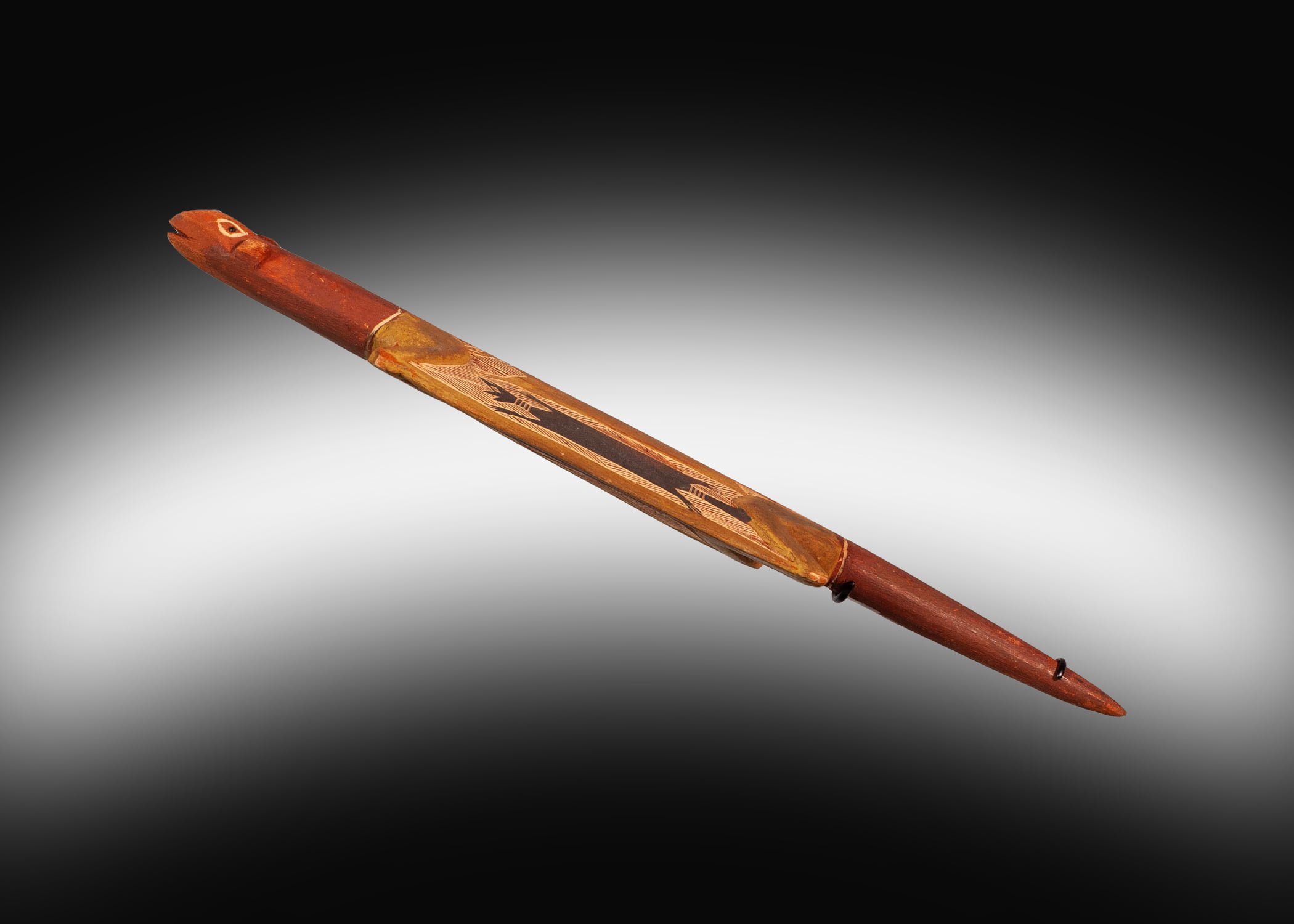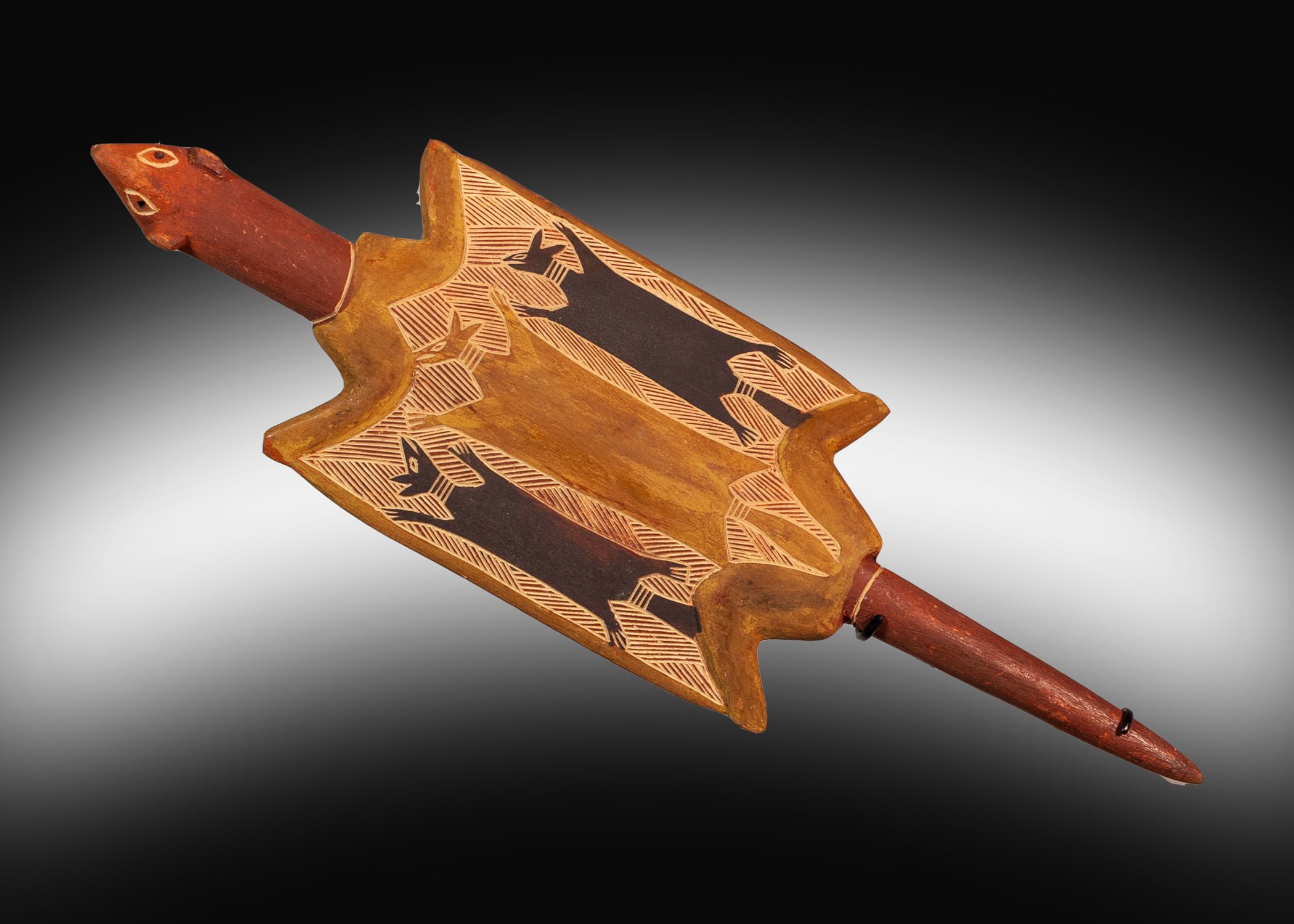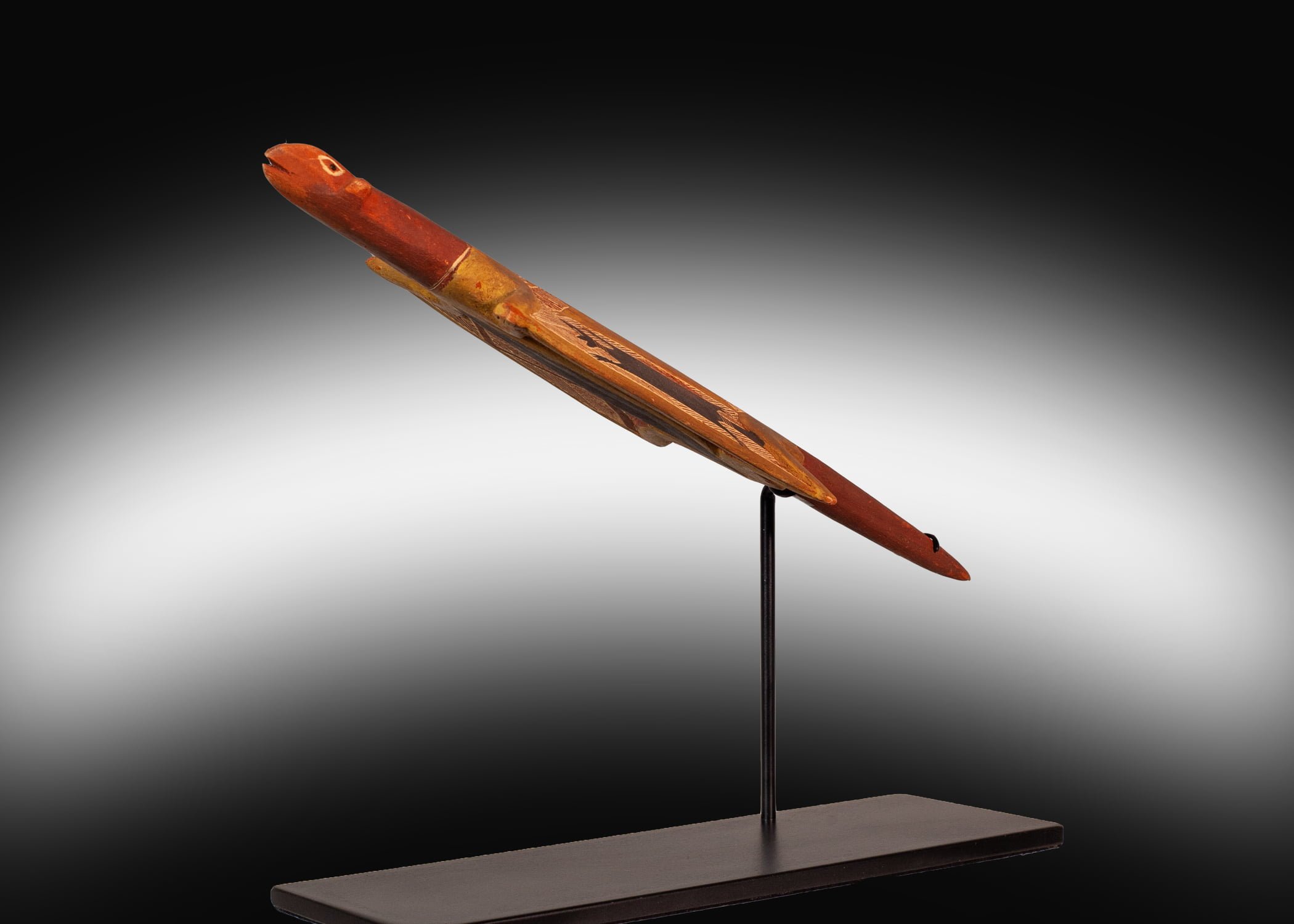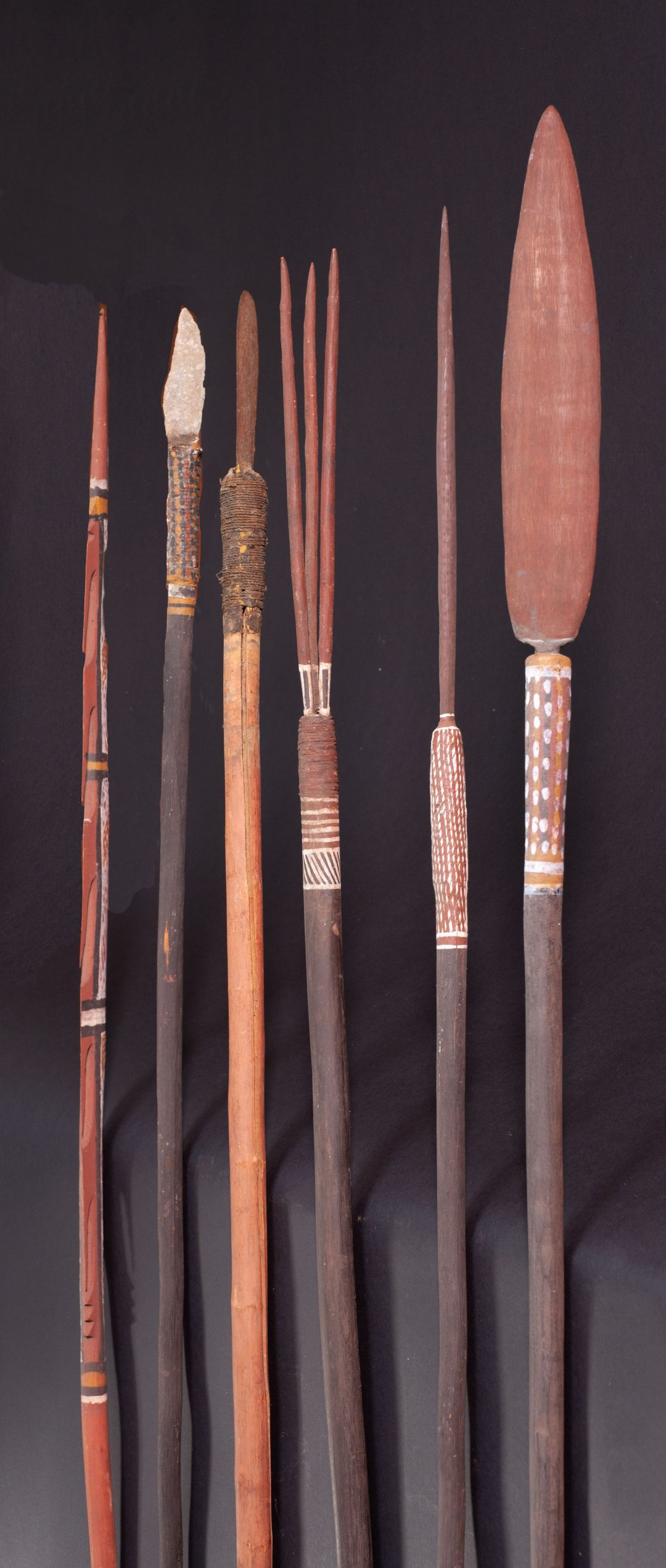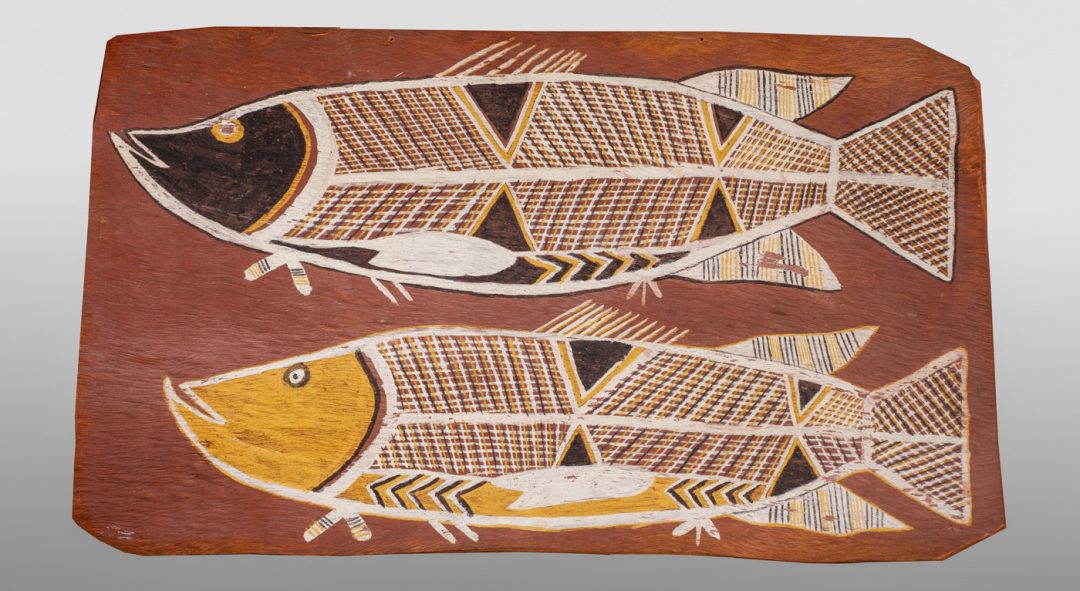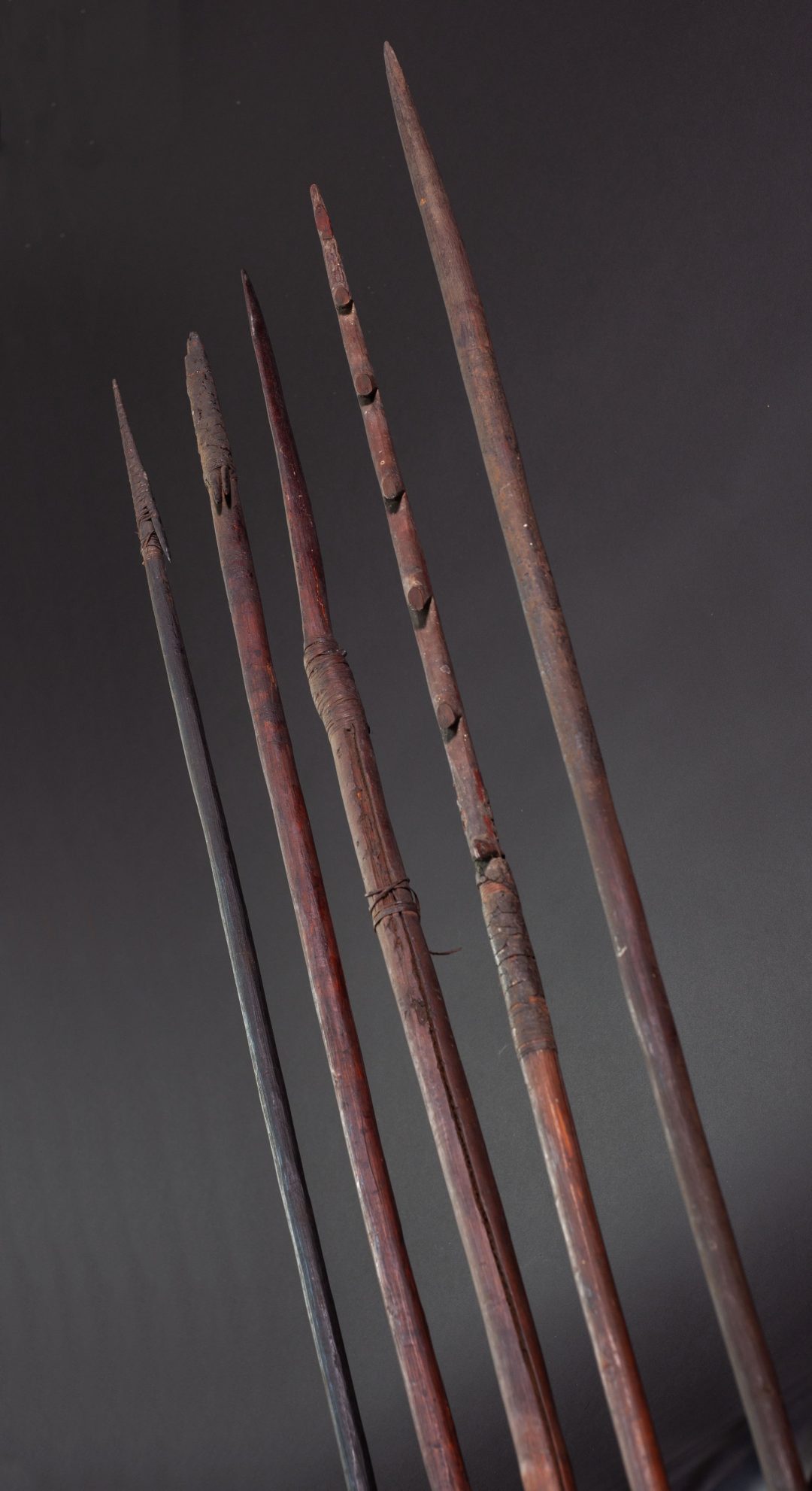Flying Fox
-
TitleFlying Fox
-
ArtistNarritjin Maymuru
-
LocationYirrkala, North East Arnhem Land , Northern Territory Northern Territory, Australia Australia
-
Date1964
-
Price$1,800.00
Superb flying fox scultpure by Narritjin Maymuru , North East Arnhem Land , Northern Territory , Australia, 1922-82 collected 1964
Includes custom metal stand
Narritjin Maymuru was a great creator as well as innovator of art. His work is housed in many institutions and private collections throughout the world. Narritjin was born around 1922 (deceased 1982) at Blue Mud Bay. He was a Yolnu. Narratjin was passionate about the protection of his culture and lands. In 1963 he painted the famous Yirrikala bark petition protesting the acquisition of a large area of land for bauxite mining. In the early 70s Nhulunbuy a mining township was established. It was to change the lives of the Yolnu for ever. Narritjin protested against a pub being introduced into Nhulunbuy as he feared and rightly so the havoc it could cause to his countrymen. The sculpture is on a custom metal stand and in excellent condition.
The first known paintings by Narritjin were produced for anthropologist Ronald Berndt in 1946 these are housed in the Berndt Museum WA and Mcleay Museum Sydney. Even at this early stage Narritjin and his brother Nanyin showed how receptive they were to innovation and change. Ronald Berndt sent the brothers brown butchers paper and crayons so they could produce images all year round. Bark painting was a seasonal activity limited to the wetter months when the bark was not too dry and stiff to straighten. In 46-47 the brothers produced a series of works on paper which are housed at the Berndt Museum.
Following Berndt was the famous American Australian Expedition in 1948 lead by Charles Mountford. Mountford an anthropologist focused on the material objects and art from Yirrikala. Again Narritjin was at the forefront in creating works.
Interestingly at around this point Narritjin stopped producing works for the next ten years as he thought it was not worth the effort for what he got paid. It was not until the early 60s that he recommenced painting again. Most likely as a response to Art Gallery of NSW and Dr Scougalls involvement with Mungurrawuy Yunupingu and Mawalan Marika. These artists produced some large works. Narritjin however at this early stage was only interested in painting at a small scale with very fine line work as this was the size he was used to painting when he painted human bodies for ceremonial purposes.
It was at this period in 1961 that my father Jim Davidson went to Arnhem Land and started collecting and dealing in Aboriginal art. Although he travelled to the main centres in the west and central regions of Arnhem Land his real passion was with the artists of Yirrikala. In particular he formed a very strong and close relationship with Narritjin which was maintained through out his life. At this early stage he collected a number of Narritjin’s works. A large number of the significant works ended up in public institutions. In particular the NGV, and Australian National Museum in Canberra.
Superb flying fox scultpure by Narritjin Maymuru , North East Arnhem Land , Northern Territory , Australia, 1922-82 collected 1964
Includes custom metal stand
Narritjin Maymuru was a great creator as well as innovator of art. His work is housed in many institutions and private collections throughout the world. Narritjin was born around 1922 (deceased 1982) at Blue Mud Bay. He was a Yolnu. Narratjin was passionate about the protection of his culture and lands. In 1963 he painted the famous Yirrikala bark petition protesting the acquisition of a large area of land for bauxite mining. In the early 70s Nhulunbuy a mining township was established. It was to change the lives of the Yolnu for ever. Narritjin protested against a pub being introduced into Nhulunbuy as he feared and rightly so the havoc it could cause to his countrymen. The sculpture is on a custom metal stand and in excellent condition.
The first known paintings by Narritjin were produced for anthropologist Ronald Berndt in 1946 these are housed in the Berndt Museum WA and Mcleay Museum Sydney. Even at this early stage Narritjin and his brother Nanyin showed how receptive they were to innovation and change. Ronald Berndt sent the brothers brown butchers paper and crayons so they could produce images all year round. Bark painting was a seasonal activity limited to the wetter months when the bark was not too dry and stiff to straighten. In 46-47 the brothers produced a series of works on paper which are housed at the Berndt Museum.
Following Berndt was the famous American Australian Expedition in 1948 lead by Charles Mountford. Mountford an anthropologist focused on the material objects and art from Yirrikala. Again Narritjin was at the forefront in creating works.
Interestingly at around this point Narritjin stopped producing works for the next ten years as he thought it was not worth the effort for what he got paid. It was not until the early 60s that he recommenced painting again. Most likely as a response to Art Gallery of NSW and Dr Scougalls involvement with Mungurrawuy Yunupingu and Mawalan Marika. These artists produced some large works. Narritjin however at this early stage was only interested in painting at a small scale with very fine line work as this was the size he was used to painting when he painted human bodies for ceremonial purposes.
It was at this period in 1961 that my father Jim Davidson went to Arnhem Land and started collecting and dealing in Aboriginal art. Although he travelled to the main centres in the west and central regions of Arnhem Land his real passion was with the artists of Yirrikala. In particular he formed a very strong and close relationship with Narritjin which was maintained through out his life. At this early stage he collected a number of Narritjin’s works. A large number of the significant works ended up in public institutions. In particular the NGV, and Australian National Museum in Canberra.
